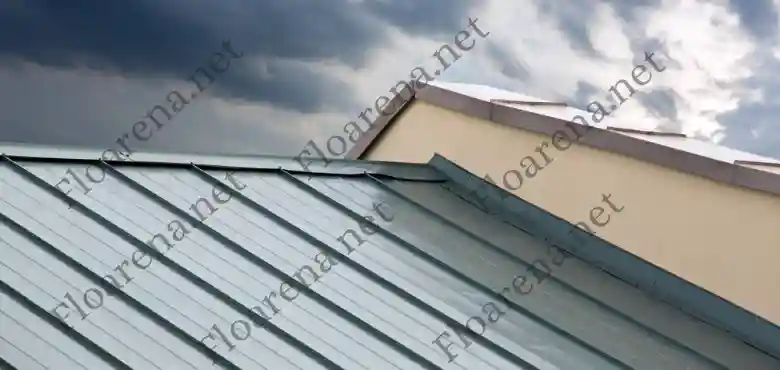Maintaining your metal roof is crucial for ensuring its longevity and durability. In this comprehensive guide, we’ll delve into the essentials of metal roof maintenance, offering practical tips and tricks to keep your roof in top-notch condition. From preventing rust to conducting DIY roof repairs, we’ve got you covered.
Join us on this journey to discover the key practices that will not only enhance the aesthetic appeal of your home but also protect your investment. Let’s dive into the world of metal roof care and make sure your roof stands the test of time!
Cleaning Metal Roofing: A Step-by-Step Guide
Let’s dive into the details of cleaning metal roofing with a step-by-step guide to ensure your roof stays in top condition.
Gather Your Tools
Before you begin, assemble the necessary tools and materials. You’ll need a soft-bristle brush, a non-abrasive cleaner (avoid harsh chemicals that may damage the metal), a hose, and a bucket. Ensure your safety by using a sturdy ladder and, if necessary, a safety harness.
Clear Debris
Start by removing any loose debris such as leaves, branches, or dirt from the roof. Use the soft-bristle brush to sweep away these materials gently. This step prevents scratches and ensures a clean surface for the next stages of the cleaning process.
Rinse the Roof
Using a hose, thoroughly rinse the roof to eliminate any remaining loose debris. This initial rinse helps prepare the surface for the cleaning solution and provides a clear view of the roof’s condition.
Apply the Cleaning Solution
Prepare a mixture of your chosen non-abrasive cleaner with water according to the product’s instructions. Apply the solution to the roof, starting from the top and working your way down. Ensure even coverage, and pay extra attention to areas with visible stains or discoloration.
Scrub Gently
Using the soft-bristle brush, scrub the roof gently. Focus on stained or dirty areas, working in a circular motion. Avoid using excessive force to prevent scratching or damaging the metal surface. Take your time to ensure thorough cleaning.
Rinse Again
Once you’ve scrubbed the entire roof, rinse it thoroughly with the hose. Make sure all cleaning solution residues are washed away. A clean, clear rinse helps maintain the integrity of the metal and prevents any potential damage from lingering chemicals.
Preventing Rust: The Silent Threat to Metal Roofs
Preventing rust is crucial to maintaining the longevity and structural integrity of metal roofs. Rust, often considered the silent threat, can quietly compromise the protective layers of your roof, leading to more significant issues over time. Let’s explore effective strategies to keep rust at bay:
Choose Rust-Resistant Materials
Start with prevention at the source. Opt for metal roofing materials that are specifically designed to resist rust. Galvanized steel and aluminum, for example, come with protective coatings that act as barriers against corrosion.
Regular Cleaning
Regular cleaning is not only about aesthetics; it’s a fundamental step in preventing rust, especially for metal roofing. Clearing away debris and dirt eliminates potential contaminants that could accelerate the corrosion process. Follow the step-by-step cleaning guide mentioned earlier to maintain a clean and rust-free surface.
Apply a Rust Inhibitor
Consider applying a rust inhibitor after cleaning. These inhibitors create an additional protective layer on the metal surface, acting as a barrier against moisture and the primary culprits in the rusting process. Ensure the inhibitor is compatible with your roofing material.
Address Scratches and Dents Promptly
Scratches and dents in the metal surface can expose it to the elements, accelerating the rusting process. Inspect your roof regularly and address any signs of damage promptly. Use touch-up paint or an appropriate sealant to cover exposed areas and prevent rust from taking hold.
Maintain Proper Drainage
Standing water on your roof can contribute to rust formation, especially in areas where drainage is inadequate. Ensure your gutters are clear of debris, and the roof has proper drainage channels to prevent water accumulation. Good drainage reduces the likelihood of prolonged exposure to moisture, a key factor in rust development.
Roof Inspections: A DIY Guide to Identifying Issues Early
Performing regular DIY roof inspections is a proactive approach to identifying and addressing potential issues before they escalate. Here’s a step-by-step guide to help you conduct thorough inspections and ensure the early detection of any roofing issues:
Safety First
Before ascending your roof, prioritize safety. Use a sturdy ladder placed on a level surface and ensure it extends at least three feet above the roof edge. If possible, have a spotter to hold the ladder and assist you. Wear appropriate safety gear, including non-slip shoes and, if needed, a safety harness.
Check for Shingle Issues
If your roof has shingles, inspect them closely. Look for curled, cracked, or missing shingles. Pay attention to any granule loss, as it can indicate the aging of the shingles. Check for signs of wear and tear, especially in areas exposed to the elements.
Examine Flashings
Inspect the flashings, the metal pieces around roof joints and intersections. Ensure they are securely in place and free from rust or corrosion. Damaged or deteriorating flashings can lead to leaks, so address any issues promptly.
Evaluate Gutters and Downspouts
Clean gutters and downspouts of debris to maintain proper drainage. Check for any signs of sagging, corrosion, or damage. Ensure that water flows freely through downspouts and away from the foundation to prevent water damage.
Look for Moss and Algae
In humid climates, moss and algae can grow on roofs, leading to potential damage. If you notice any growth, consider using a moss-killing solution or installing zinc strips to prevent further development.
Inspect Seals and Caulking
Check seals and caulking around vents, chimneys, and other protrusions. Ensure they are intact and not cracked. Damaged seals can allow water infiltration, leading to leaks and potential interior damage.
Document Findings
Take notes or photos during your inspection to document any issues you find. This documentation can be helpful if you need to consult with a professional roofer or for future reference during subsequent inspections.
The Lasting Impact of Metal Roof Maintenance
Mastering the art of metal roof maintenance is the key to a durable and long-lasting roofing investment. By implementing the tips and tricks outlined in this guide, you not only enhance the visual appeal of your home but also contribute to the resilience of your metal roof.
Remember, a well-maintained roof is a safeguard against the elements, ensuring peace of mind and protection for your cherished abode. Here’s to a roof that stands strong against time! Explore the rest of our site for more insights






